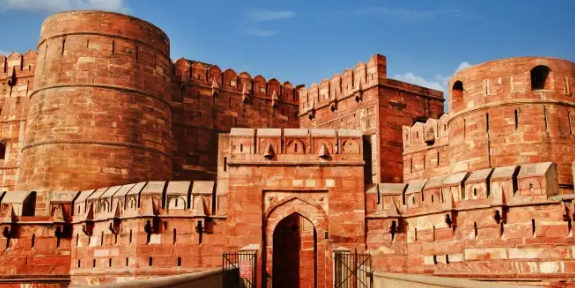The City Palace of Jaipur, also known as the Palace of the Maharaja of Jaipur, is a magnificent palace complex located in the heart of Jaipur, Rajasthan. It is a prime example of Rajput and Mughal architecture and is considered one of the most famous tourist attractions in Jaipur. The palace complex comprises of a series of courtyards, gardens, and buildings. In this article, we will delve into the history and architecture of the City Palace of Jaipur.
History The City Palace of Jaipur was built in the early 18th century by Maharaja Sawai Jai Singh II, who was the ruler of Jaipur from 1699 to 1744. The palace was built in a sequence of phases, starting from 1729 and finishing in 1732. The palace was the seat of the Maharaja of Jaipur and the royal family. The palace has undergone several renovations and modifications over the years, particularly during the reign of Maharaja Sawai Ram Singh II, who added several new buildings to the complex.
Architecture The City Palace of Jaipur is a fusion of Rajput and Mughal architectural styles. The palace complex comprises of several buildings, including the Chandra Mahal, Mubarak Mahal, and the Diwan-i-Khas.
The Chandra Mahal is the most prominent building of the complex, and it is seven stories tall. The top floor of the Chandra Mahal offers a panoramic view of the entire city of Jaipur. The Chandra Mahal is a beautiful blend of Rajasthani and Mughal architectural styles. The palace has several rooms with intricate designs on the walls and ceilings. The most prominent feature of the Chandra Mahal is its intricate peacock gate, which is made of carved wood and inlaid with glass.
The Mubarak Mahal, also known as the Welcome Palace, was built by Maharaja Sawai Madho Singh II in the late 19th century. The Mubarak Mahal is a two-story building, and it was used to welcome foreign dignitaries and guests of the royal family. The Mubarak Mahal is a beautiful blend of Mughal and Rajasthani architectural styles.
The Diwan-i-Khas is the private audience hall of the Maharaja of Jaipur. The hall is decorated with intricate designs and paintings. The walls of the Diwan-i-Khas are adorned with beautiful glasswork and mirror work.
Apart from these buildings, the palace complex also houses several other buildings, including the Maharani’s Palace, the Bhaggi Khana, and the Pritam Niwas Chowk.
The City Palace of Jaipur is also famous for its beautiful gardens and courtyards. The palace complex has several gardens, including the Mughal Garden and the Charbagh Garden. The Mughal Garden is a beautiful garden with fountains, water channels, and flower beds. The Charbagh Garden is a traditional Rajasthani garden with four quadrants, symbolizing the four seasons.
In conclusion, the City Palace of Jaipur is an architectural marvel that is a blend of Rajput and Mughal architectural styles. The palace complex comprises of several buildings, gardens, and courtyards, and it is a prime example of the opulence and grandeur of the Rajasthani royal family. The palace complex is a must-visit for anyone visiting Jaipur and is an essential part of India’s architectural heritage.










